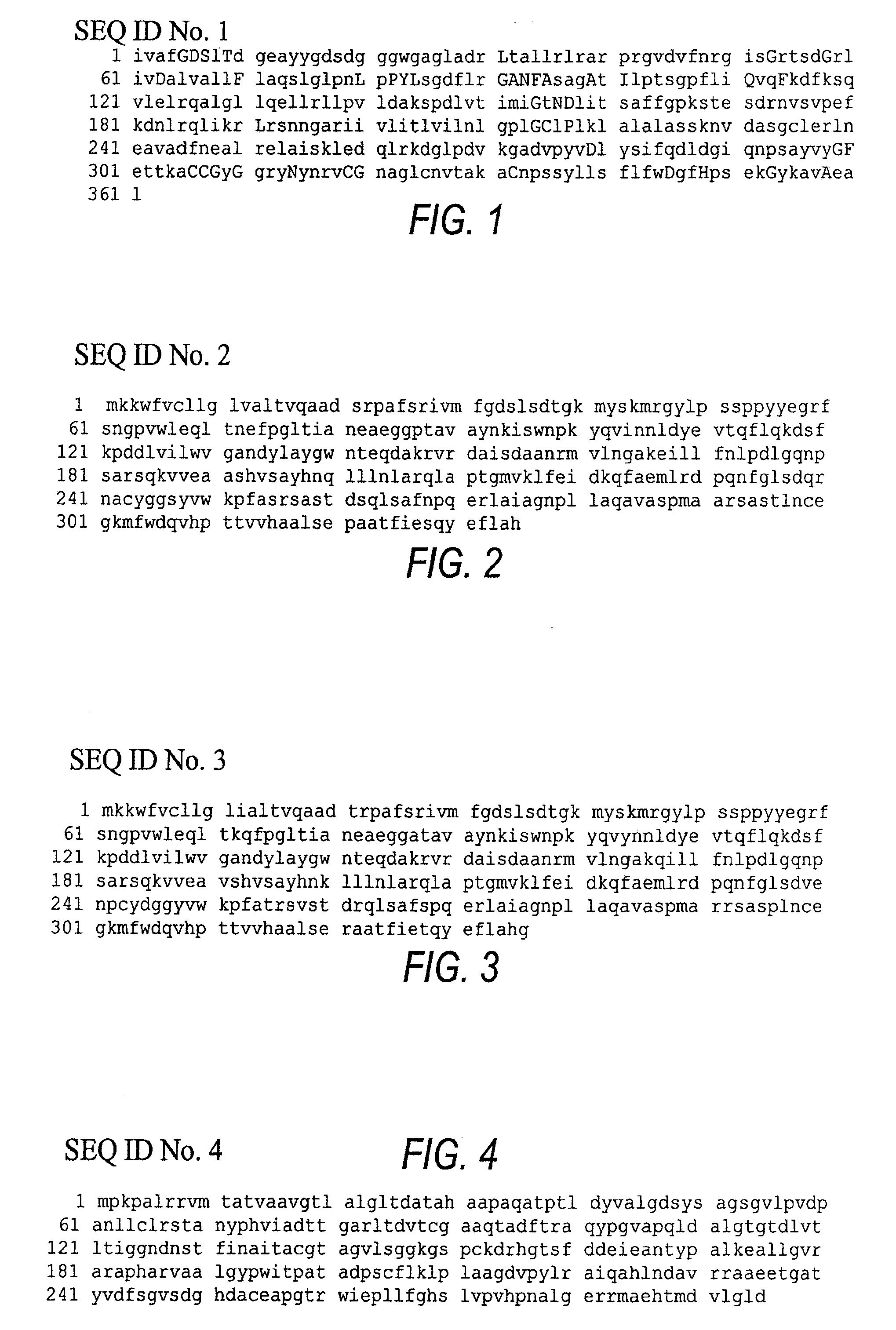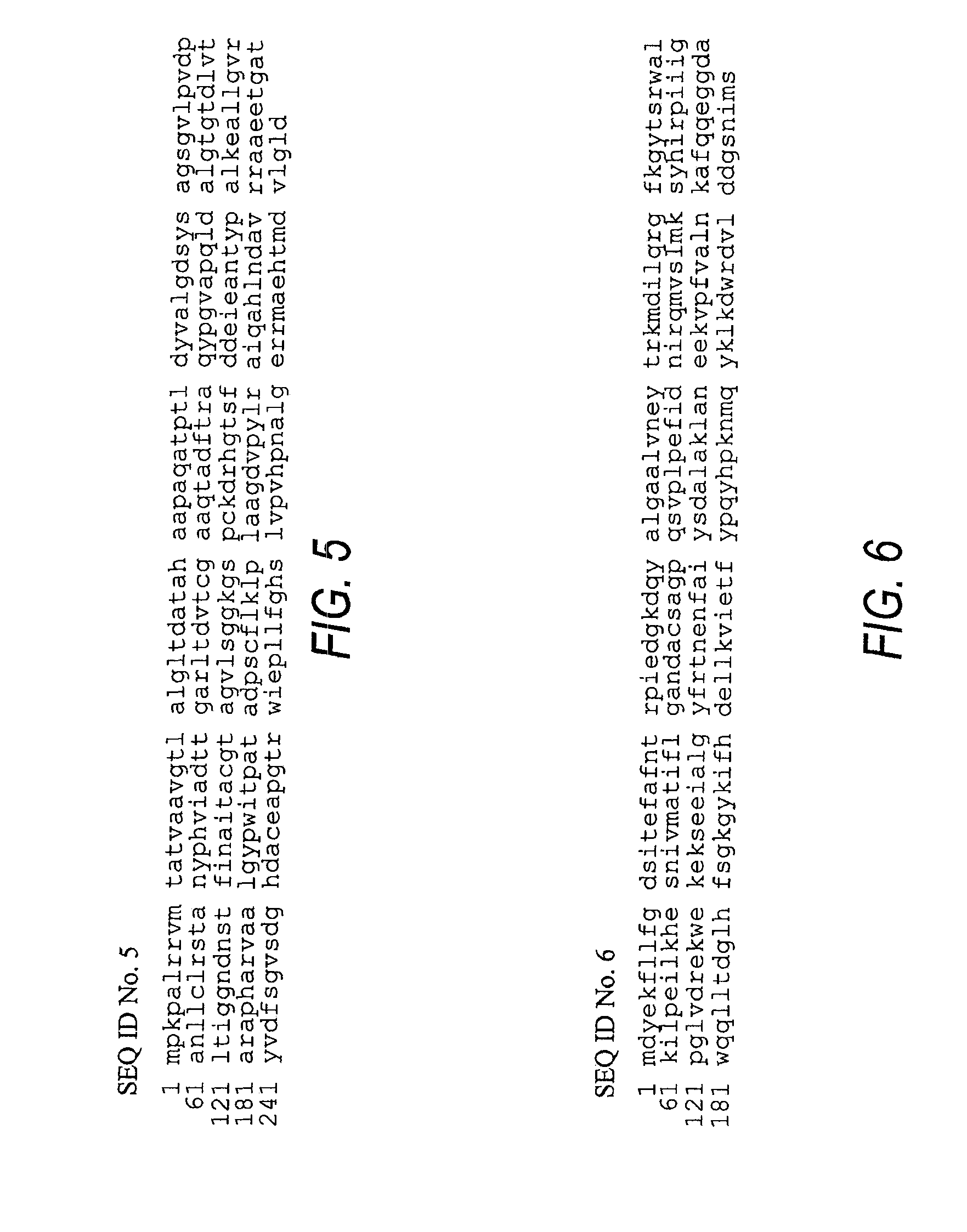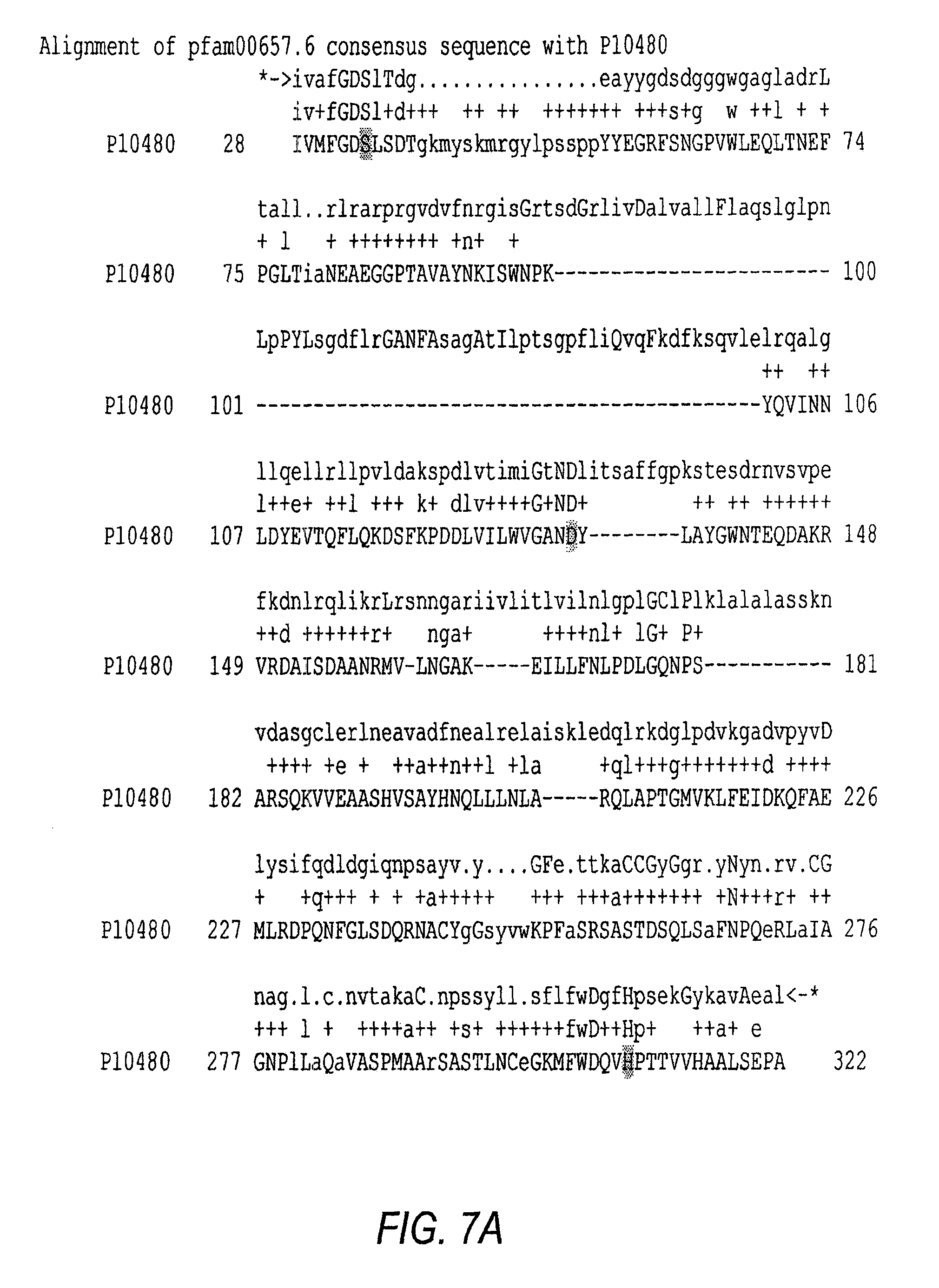Method
a technology of emulsifier and in situ production, which is applied in the direction of emulsifier, food ingredient, transferases, etc., can solve the problems of reducing limiting the functionality of lipolytic enzymes, and significant increase of free fatty acids in foodstuffs, so as to improve the incorporation of whey protein into food products, maintain organoleptic and other desirable properties, and improve efficiency
- Summary
- Abstract
- Description
- Claims
- Application Information
AI Technical Summary
Benefits of technology
Problems solved by technology
Method used
Image
Examples
example 1
The Cloning, Sequencing and Heterologous Expression of a Transferase from Aeromonas salmonicida subsp. Salmonicida
Strains Used:
[0920]Aeromonas salmonicida subsp. Salmonicida (ATCC 14174) was obtained from ATCC and grown overnight at 30° C. in Luria-Bertani medium (LB). The cells were centrifuged and genomic DNA was isolated using the procedures for genomic DNA isolation from Qiagen Ltd. Genomic DNA buffer set (cat. 19060), protease K (cat. 19131) and RNAse A (cat. 19101) were all obtained from Qiagen Ltd. (Boundary court Gatwick Court, West Sussex, RH10 2AX).
[0921]Host bacterial strain BL21(DE3)pLysS (Novagen) was used for production of the recombinant Aeromonas enzymes. Competent cells of BL21(DE3)pLysS were used as host for transformation with the expression vector pet12-AsalGCAT=pSM. Transformants containing the appropriate plasmid were grown at 37° C. in LB agar medium containing 100-ug ampicillin / ml.
Construction of Expression Vector pet12-AsalGCAT-pSM:
[0922]For all DNA amplifi...
example 2
Cloning and Expression of Aeromonas hydrophila Transferase in E. coli
[0931]Aeromonas hydrophila (ATCC # 7965) was obtained from ATCC and grown overnight at 30° C. in Luria-Bertani medium (LB). The cells were centrifuged and genomic DNA was isolated using the procedures for genomic DNA isolation from Qiagen Ltd. Genomic DNA buffer set (cat. 19060), protease K (cat. 19131) and RNAse A (cat. 19101) were all obtained from Qiagen Ltd. (Boundary court Gatwick Court, West Sussex, RH10 2AX).
[0932]Host bacterial strain BL21(DE3)pLysS (Novagen) was used for production of the recombinant Aeromonas enzymes. Competent cells of BL21(DE3)pLysS were used as host for transformation with the expression vector pet12a-A.h.GCAT=pSMa. Transformants containing the appropriate plasmid were grown at 37° C. in LB agar medium containing 100-ug ampicillin / ml.
Construction of Expression Vector pet12a-A.h.GCAT-pSMa:
[0933]For all DNA amplifications of the transferase gene from Aeromonas, genomic DNA (0.2-1 ul) wa...
example 3
Expression of Aeromonas Transferases in Bacillus subtilis 163
Plasmid Construction
[0944]Two different Bacillus subtilis expression vectors (pUB 110 & pBE5) were used for the heterologous expression of the Aeromonas genes in Bacillus subtilis. The pUB110 vector contains the alpha amylase promoter while the pBE vector has the P32 promoter as the regulatory region for the expression of the fused Aeromonas genes. In pUB110, the first amino acid of the mature GCAT genes of Aeromonas were fused in frame with the last amino acid of the xylanase signal peptide sequence from Bacillus subtilis via the restriction site Nhe1, creating an additional 2 amino acids in front of the mature proteins. pBE5 contains the cgtase signal sequence fusion at the Nco1 site for secretion of the recombinant proteins into the culture filtrate.
[0945]PCR reactions were carried out to obtain the Aeromonas genes fuse in frame to the signal sequences of the pUB 110 and the pBE5 vectors. PCRs were performed using the f...
PUM
| Property | Measurement | Unit |
|---|---|---|
| pH | aaaaa | aaaaa |
Abstract
Description
Claims
Application Information
 Login to View More
Login to View More - R&D
- Intellectual Property
- Life Sciences
- Materials
- Tech Scout
- Unparalleled Data Quality
- Higher Quality Content
- 60% Fewer Hallucinations
Browse by: Latest US Patents, China's latest patents, Technical Efficacy Thesaurus, Application Domain, Technology Topic, Popular Technical Reports.
© 2025 PatSnap. All rights reserved.Legal|Privacy policy|Modern Slavery Act Transparency Statement|Sitemap|About US| Contact US: help@patsnap.com



